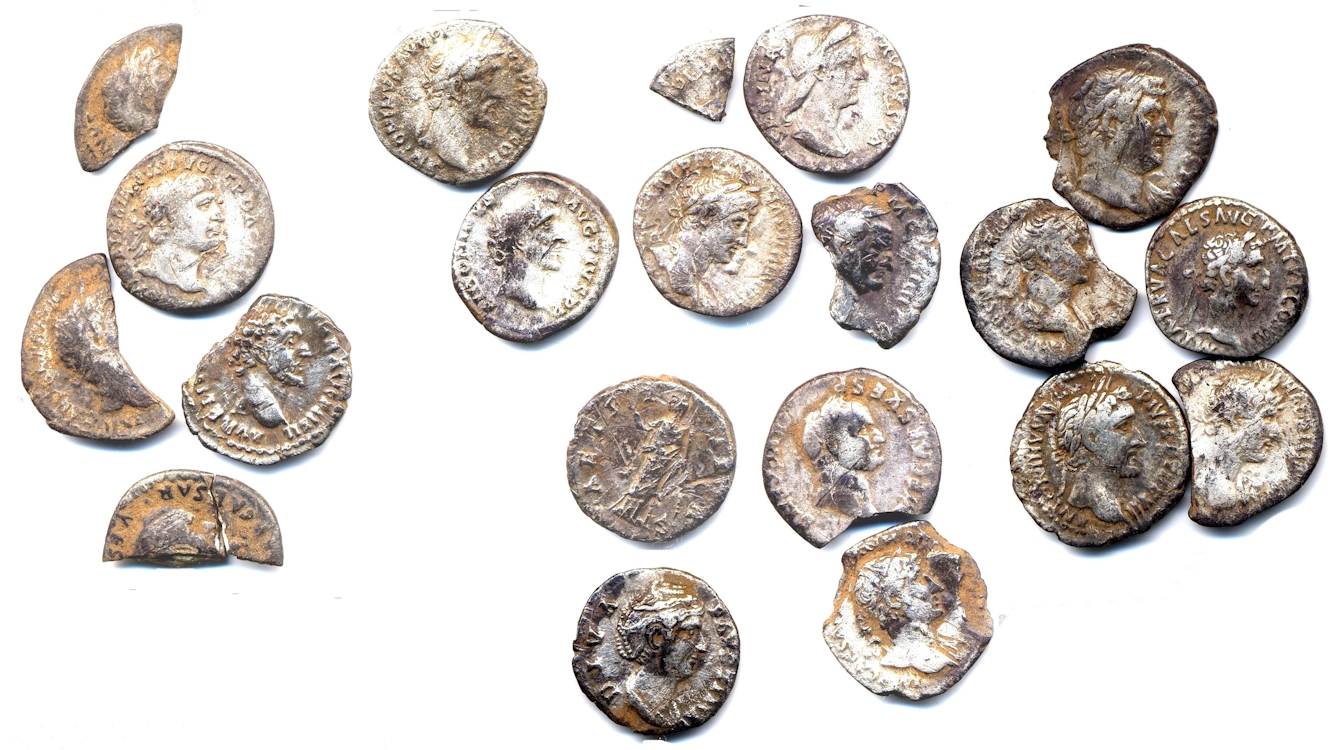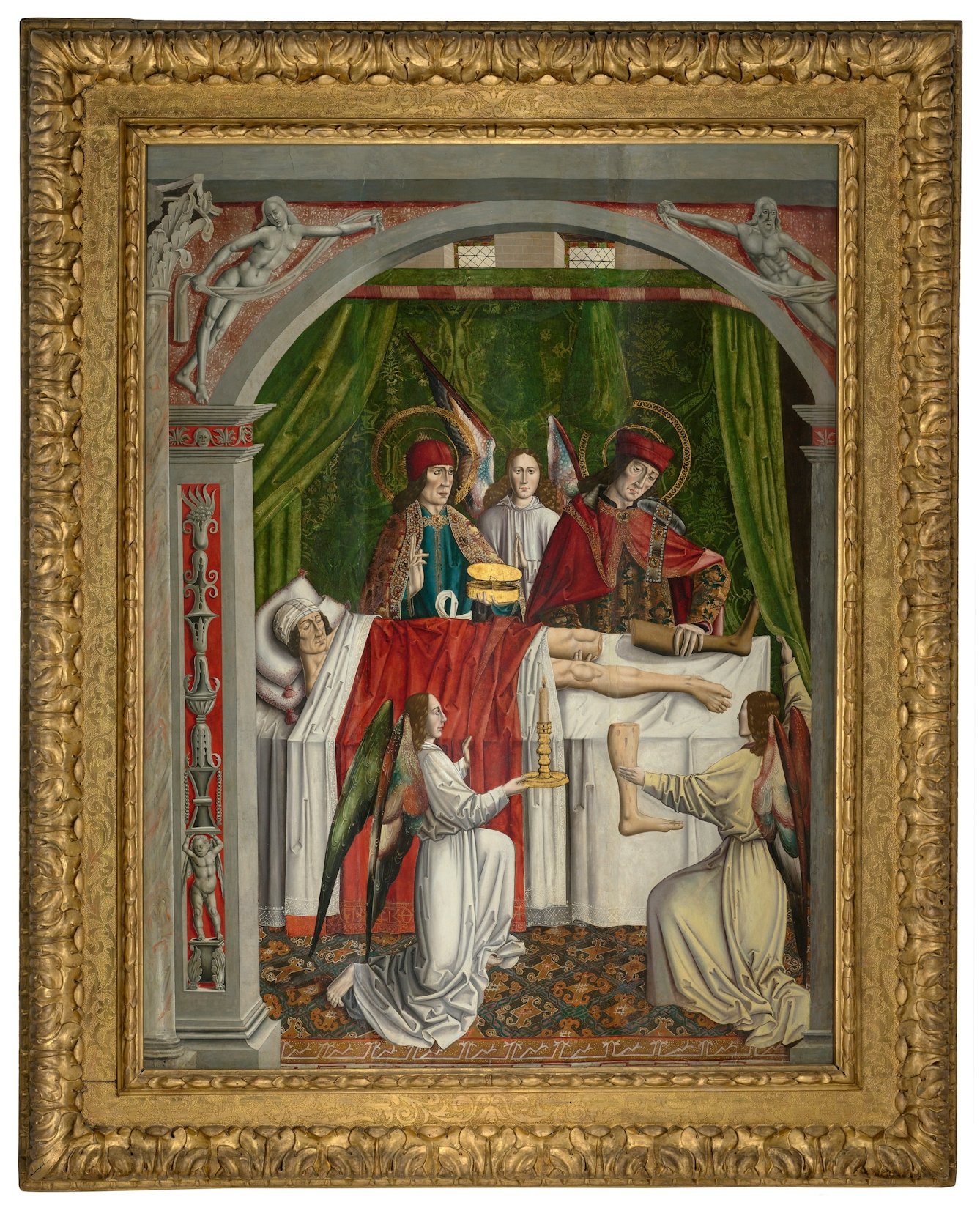Today, people are still debating whether healthcare is a universal right. But nearly 2,000 years ago, doctors known as the Unmercenaries took the system into their own hands and provided free healthcare for all.
In Greek, anargyroi – the name given to selfless and charitable doctors – literally means the ‘silverless’, but it is frequently translated as the ‘Unmercenaries’ because these physicians offered medical treatment free of charge. They were made saints for their generosity.
The earliest saints to receive the title of Unmercenaries were two women, Zenaida and Philonella. They were sisters from first-century Tarsus (today a city in Turkey) who studied medicine and eventually settled near a temple dedicated to Asclepius, the ancient Greek god of medicine.
Their hagiographies – biographies of the saints – recall that they offered their medical expertise for free and competed with pagan physicians who were charging outrageous prices for amulets and other magical cures. One account of their lives relates that the sisters were stoned to death by these pagan rivals one night.

Anargyroi or Unmercenaries treated patients for free and refused silver coins such as these, found in a Roman hoard.
The most famous saint physicians, however, were two brothers from Arabia: Cosmas and Damian. They were familiar with the works of Hippocrates and Galen and were known for their various ointments and treatment. The brothers were so popular that two copycat sets of physicians by the same names appear in Syria and Rome.
The original Cosmas and Damian met a sticky end when they were hung on a cross, stoned, shot by arrows and then beheaded. But, reportedly, even this didn’t stop them healing people. During the medieval period, long after their deaths, people still believed that Cosmas and Damian offered healing power. According to one of their most famous healing stories, a man suffered from a gangrenous leg. The brothers appeared in his dream and performed surgery on the leg. In the morning, he was healed, but his leg had been replaced with the leg of a black man.

This painting from the late 1400s depicts the miraculous transplant that Saints Cosmas and Damian were said to have performed upon a man while he lay dreaming.
Public service and celebrity clients
Stories of different Unmercenaries often have similarities in theme, with the grasping pagan presented in comparison to the gracious Christian. And of course, the primary goal of these stories was to show the power of God through the ancient physicians. So are these stories accurate representations of healthcare in late antiquity?
Ancient sources reveal that the complex landscape of healthcare in Ancient Greece and Rome was in some ways not too different from what we know today.
There were some high-profile ‘celebrity doctors’ who were better known for their client lists than their abilities. Writing in the first century, Pliny the Elder was unimpressed by fame-hungry physicians. He summed up his view:
“There can be no doubt whatever that all these men, in the pursuit of celebrity by the introduction of some novelty or other, made purchase of it at the downright expense of human life.”
Some of these celebrity doctors benefited from their reputation or their connections to the elite. And there were several schools of thought that explained how a physician ought to relate to his patients. But the Hippocratic tradition, which is the most famous today because doctors still take the Hippocratic Oath, applied a different ethic for how physicians charge patients for their services.
With their doctrine of charity, the ‘silverless’ physician saints set an example for compassion.
For example, it argued that the physician ought to prioritise treatment and not fees, and that if a patient was suffering economic hardship, the physician ought to dispense with payment altogether:
“Consider carefully your patient’s superabundance or means. Sometimes give your services for nothing, calling to mind a previous benefaction or satisfaction. And if there is an opportunity of serving one who is a stranger in financial straits, give full assistance to all such. For where there is love of man, there is love of the art.”
How did people pay doctors in ancient times?
Religious cults and temples also provided healing services in exchange for sacrifices, prayers and donations. Healing was one of the powers of the god Apollo, but the most famous medical cult belonged to Asclepius. It developed in the fifth and fourth centuries BCE before spreading throughout the Grecian world.
The sick travelled to a temple, usually located in a sacred grove or sacred spring, and performed sacrifices. They would sleep and might encounter the god in dreams, from which they awoke mysteriously healed. On his deathbed, Socrates even famously said, “Crito, we owe a rooster to Asclepius. Do pay it. Don’t forget.”

Objects like this terracotta head were often left as offerings to Asclepius. They could indicate the part of the body that needed help or be thanks for a cure. It may have been that this boy had a head injury or experienced headaches.
Physicians could also earn income by teaching students or serving as public doctors. Classical Greece and Rome had some examples of healthcare institutions that both provided payment for physicians and guaranteed treatment for the community. For instance, according to Herodotus, a doctor called Democedes was hired by the Aeginetans and then the Athenians to serve the public. The community paid some kind of tax for a local doctor or provided other means for his livelihood in the city, so that he could offer wider services to its citizens.
Other accounts describe a similar system for some military forces:
“On their military campaigns and their journeys in the country, they all receive treatment without the payment of any private fee; for the physicians draw their support from public funds and administer their treatments in accordance with a written law which was composed in ancient times by many famous physicians.”
Free medical care in the 21st century
A critic might be quick to point out that these institutions likely favoured the elite and were not truly universal. As far we know, the Athenians probably only provided such medical attention to citizens (which excluded slaves and ‘barbarians’ – their term for those who did not speak Greek or follow the Greek way of life). And medical treatment for the military is not the same as a publicly funded clinic for the poorest.
On the other hand, medical ethics from the time certainly regarded medicine as a virtue and right grounded in shared humanity. And that principle only expanded with the Unmercenaries. With their doctrine of charity, the ‘silverless’ physician saints set an example for compassion. This inspiration played a significant part in the Christian origins of medieval hospitals and institutions to care for the sick and poor.
Today these traditions echo within our complicated healthcare systems. Some private doctors charge hefty fees because they offer swift, high-quality treatment. Other doctors work for less under state-sponsored healthcare systems, yet provide important public services. And we even have our own radical, contemporary 'silverless' physicians, such as the Doctors Without Borders and other medical volunteer charities.
Although accounts of the ancient saints’ lives might not be historically accurate, their service and the broader Hippocratic tradition can challenge us to reflect on our own understanding of healthcare as a universal human right.
About the contributors
Christopher DeCou
Christopher DeCou studied history at the universities of Michigan and Chicago. After some time teaching in Seoul, South Korea, he moved to Tel Aviv, Israel, where he writes about science, history and archaeology.
Steven Pocock
Steven is a photographer at Wellcome. His photography takes inspiration from the museum’s rich and varied collections. He enjoys collaborating on creative projects and taking them to imaginative places.


